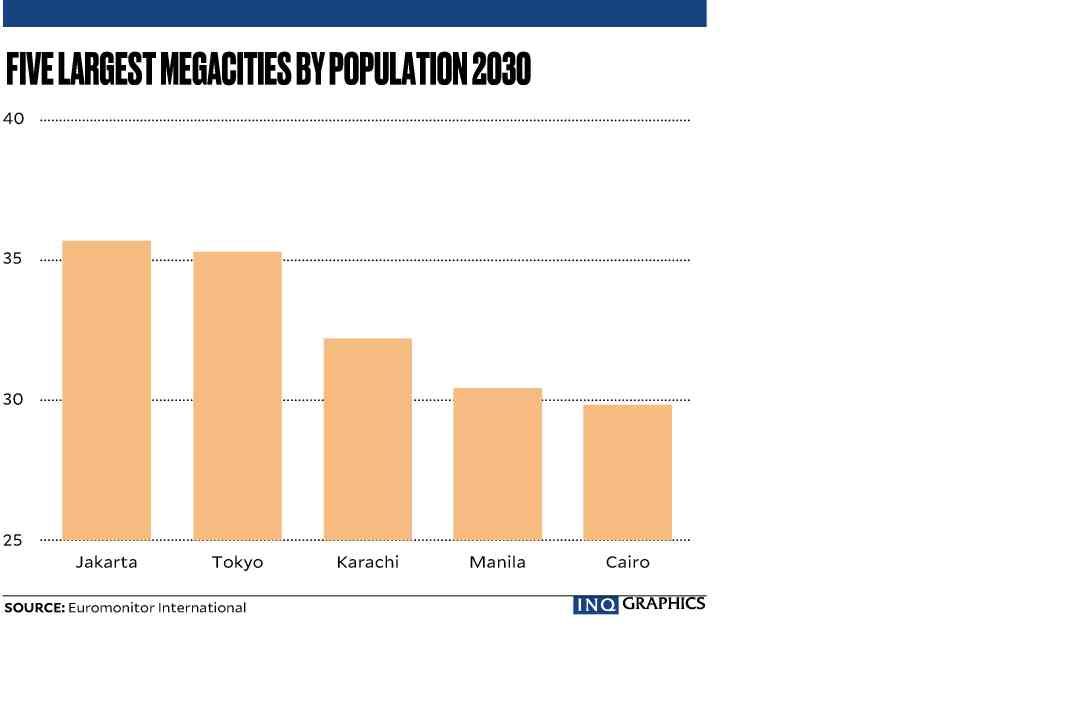Megacities’ domination growing

Titled “Megacities: Developing Country Domination,” the report offers an overview of the current economic and demographic state of the world’s megacities, which it defines as “an urbanized conurbation housing 10 or more million inhabitants … [and] are often the primary nodes for investment in a country and feature the most affluent households.”
It also highlights key forecast trends concerning megacities: the continued dominance of emerging markets; African cities at the heart of population growth; Jakarta as the world’s most populous city by 2030; the sustained affluence of developed cities; and the issue of aging in East Asia.
According to the report, in 2017, 26 of the world’s 33 megacities were in developing countries, with Asia Pacific hosting the majority (58 percent).
In terms of number of megacities, China and India take the lead both regionally and globally, with four and six cities each, respectively.
By 2030, Euromonitor forecasts that the world will have 39 megacities, which will host 9 percent of total population; account for 15 percent of global GDP; and cover 3 percent of the Earth’s land mass.
Focusing on population growth, developing cities will again trump developed ones, based on Euromonitor’s forecast for 2017-2030. Manila, in particular, will be the fourth largest megacity in the world in terms of population. Jakarta is seen to take top spot, which, according to the report, “marks a new era in urban history, as Jakarta becomes the first emerging city to hold the title of world’s largest megacity.”
It was New York which previously held that title, until it was overtaken by Tokyo in the 1950s, the report adds.
Another key trend concerning population growth focuses on Africa, and how two of its new megacities, Luanda and Dar es Salaam, will be the fastest growing ones in the region from now till 2030.
It is Cairo, however, that is expected to be Africa’s largest city by 2030, states the report, with 29.8 million people.
The report not only looks at population growth, but its demographics as well—particularly, age. The trend seems most apparent in East Asia, as Osaka is expected to be the oldest megacity in the world by 2030, with 31 percent of its population over 65 years old.
“Seoul will add 2.5 million inhabitants aged over 65 years in the period 2017–2030, followed by rises of 2.2 million and 1.8 million in Shanghai and Beijing, respectively,” states the report.
While emerging countries are expected to continue dominating the megacity scene till 2030 in terms of number, Euromonitor notes that developed megacities will remain more affluent compared to developing ones.
“It is no surprise that economic, income and expenditure growth have all been dominated by developing cities over the last decade. In spite of such growth, in 2030, developed megacities will be more affluent than emerging counterparts. For instance, based on household disposable income, Seoul ($53,000)—the least affluent developed megacity, will still be richer than Shanghai ($50,600)—the richest emerging megacity,” states the report. “Developed megacities are still the key consumer markets of the future.”
Given such forecast, Euromonitor concludes that developing countries need to ensure good access to public amenities, clean water supply, electricity, education and jobs to avoid certain pitfalls that are associated with urban growth: traffic congestion, income inequality, air pollution, crime, affordability and slum generation.

